Summary
A behind-the-scenes look at the careful considerations that go into conserving an exciting new acquisition: Howard Arkley’s ‘Casual Works’ (1974-1987).
State Library Victoria recently acquired 27 works on paper from Howard Arkley’s 1988 exhibition, Casual Works: Working Drawings, Source Material, Doodles, 1974-1987. This material forms part of a larger collection of around 200 items donated recently by The Estate of Howard Arkley; a welcome addition to the Library’s rich collection of studies, sketchbooks and source materials in the Howard Arkley Archive (MS 14217).
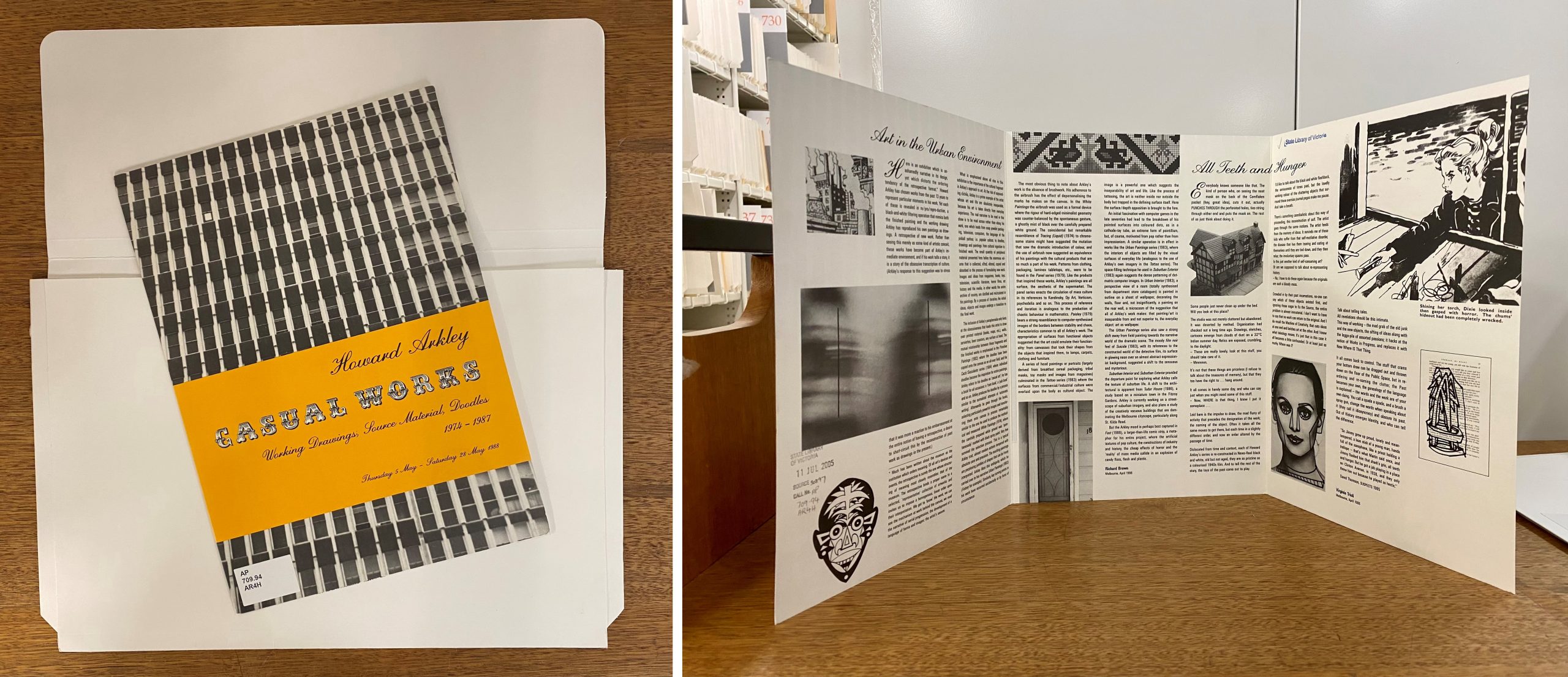
Arkley’s ‘Casual Works’ arrived at the Library stuck to 14 large plastic sheets. Consultation with the Arkley Estate and published sources revealed that the items were previously displayed on the gallery walls using the double-sided tape, then transferred to the plastic sheets as a temporary measure after deinstallation – and so they remained for the next 35 years.
However, left in this state the works would be vulnerable to further damage. Of particular concern was the risk of mechanical damage (e.g., tears, creases) and disassociation of loose parts due to the handling challenges of such unwieldy, complex objects. As the plastic sheets held no bearing on the artist’s intent, the Description Original Materials team referred the works to Conservation for separation and tape removal treatment.
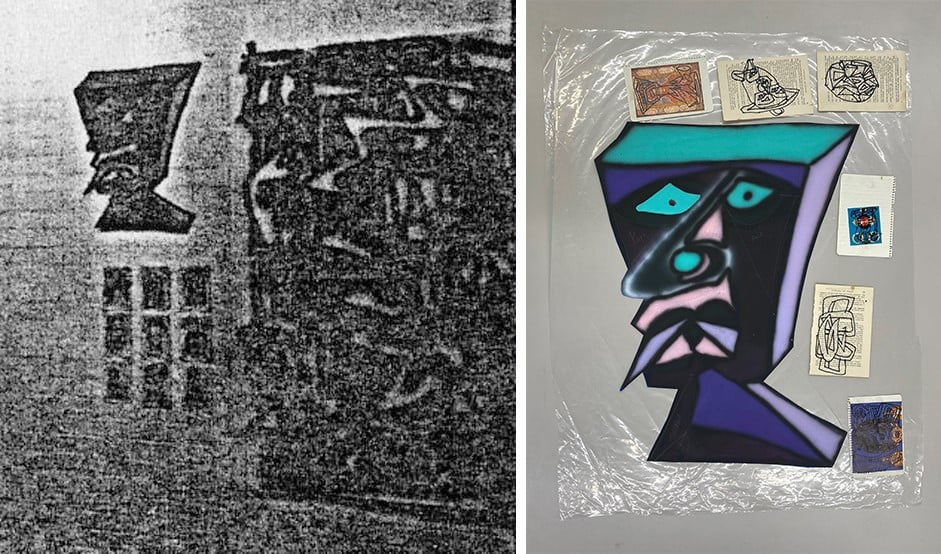
Conservation treatment
Ethics is an important consideration in the planning stage of any conservation treatment. In this case, for example, the conservator must determine if the tape is part of the object, and whether removing it would pose greater risk of damage than leaving it in place.
‘Casual Works’ displayed two different types of pressure-sensitive adhesive tapes, aka “sticky tapes”, with two distinct purposes. Double-sided tape had been used to temporarily mount the works onto the gallery walls; this was considered secondary and therefore disposable. There were also many strips of masking tape applied by the artist in the original construction of the works, which were important to retain.

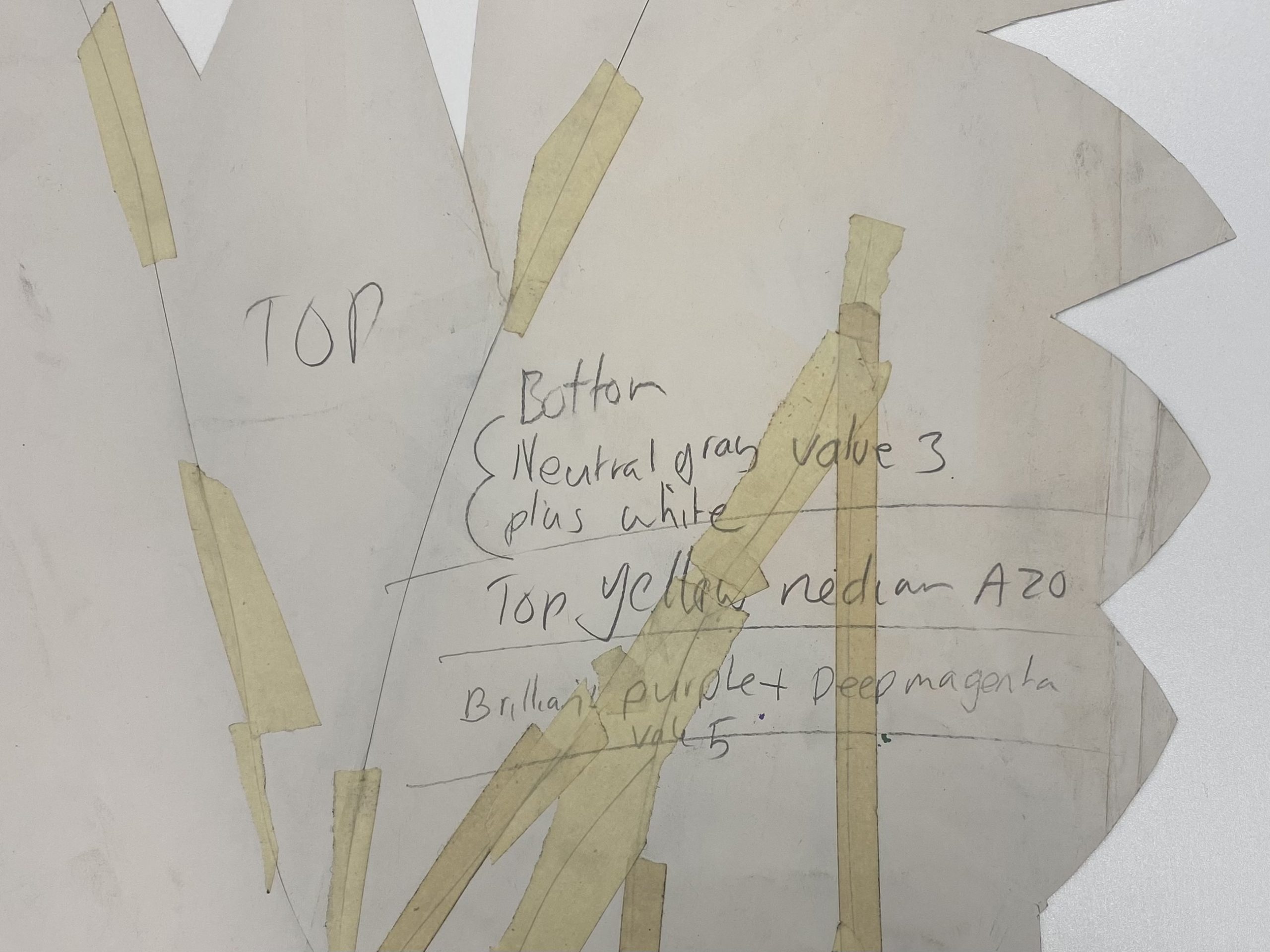
The masking tape was in varying states of deterioration. In some cases, it had stained the underlying paper; in others the adhesive had cross-linked causing the carrier to fall off. An unfortunate misalignment of intended purpose versus performance.
Double-sided tape
Techniques for tape removal vary greatly. While one tape might pop off easily, another could take hours of patient and careful work. Propitiously, the Conservation team was trialing a new non-contact infrared heat tool, which worked particularly well on double-sided tape.
After carefully placing each item face-down on a clean surface and applying weights to prevent slippage, the infrared heat tool was directed over small sections of the tape to soften the adhesive, allowing it to be gently removed. All in all, our conservator removed 112 strips of double-sided tape!

Masking tape
The decision was made to leave the masking tape in place unless it had already failed. In this case, it would be documented and retained with the item, but not reattached, to prevent any further deterioration to the paper.
Fortunately, this only impacted one item: [Tudor-style village] (MS 14217/1/1777), a photocopy of a drawing across two sheets of paper, worked over by the artist with collage, black marker and white correction fluid. All the masking tape adhesive was cross-linked, powdering, and causing the tape carrier to peel away from the paper.
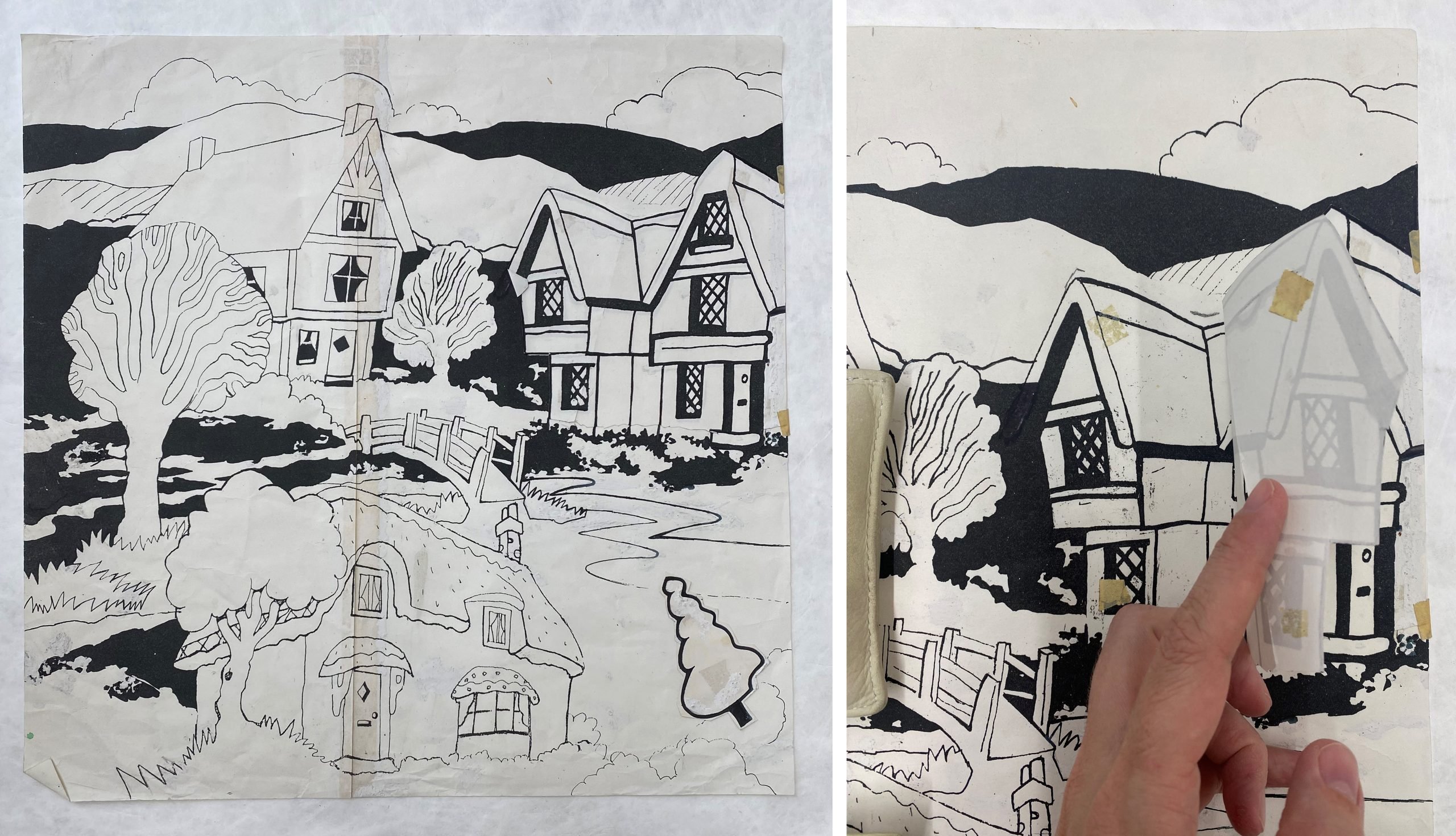
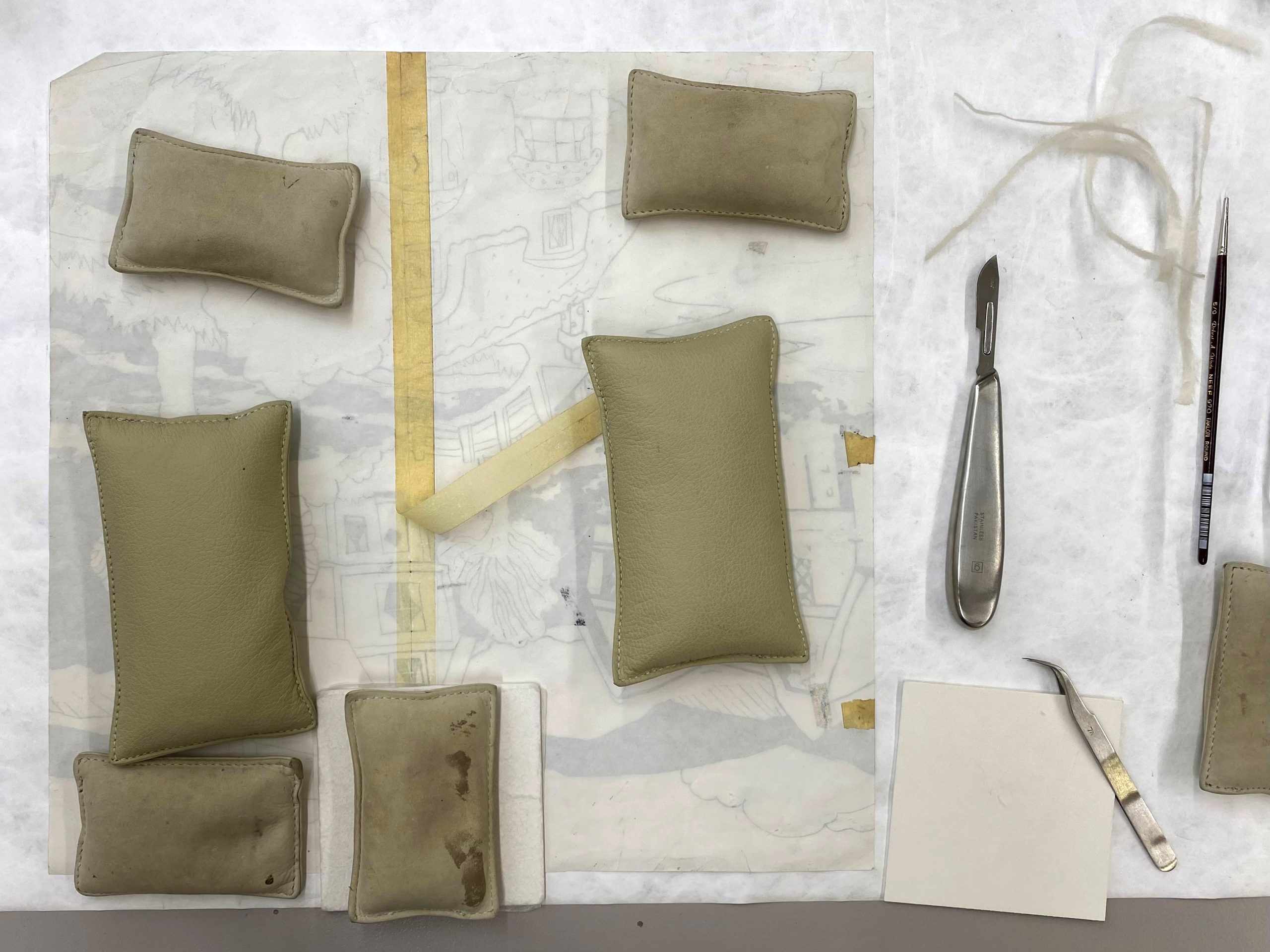
The strips of tape were gently released, replaced with archival Japanese kozo paper and wheat starch paste, and placed in small archival bags with an image documenting their original location.
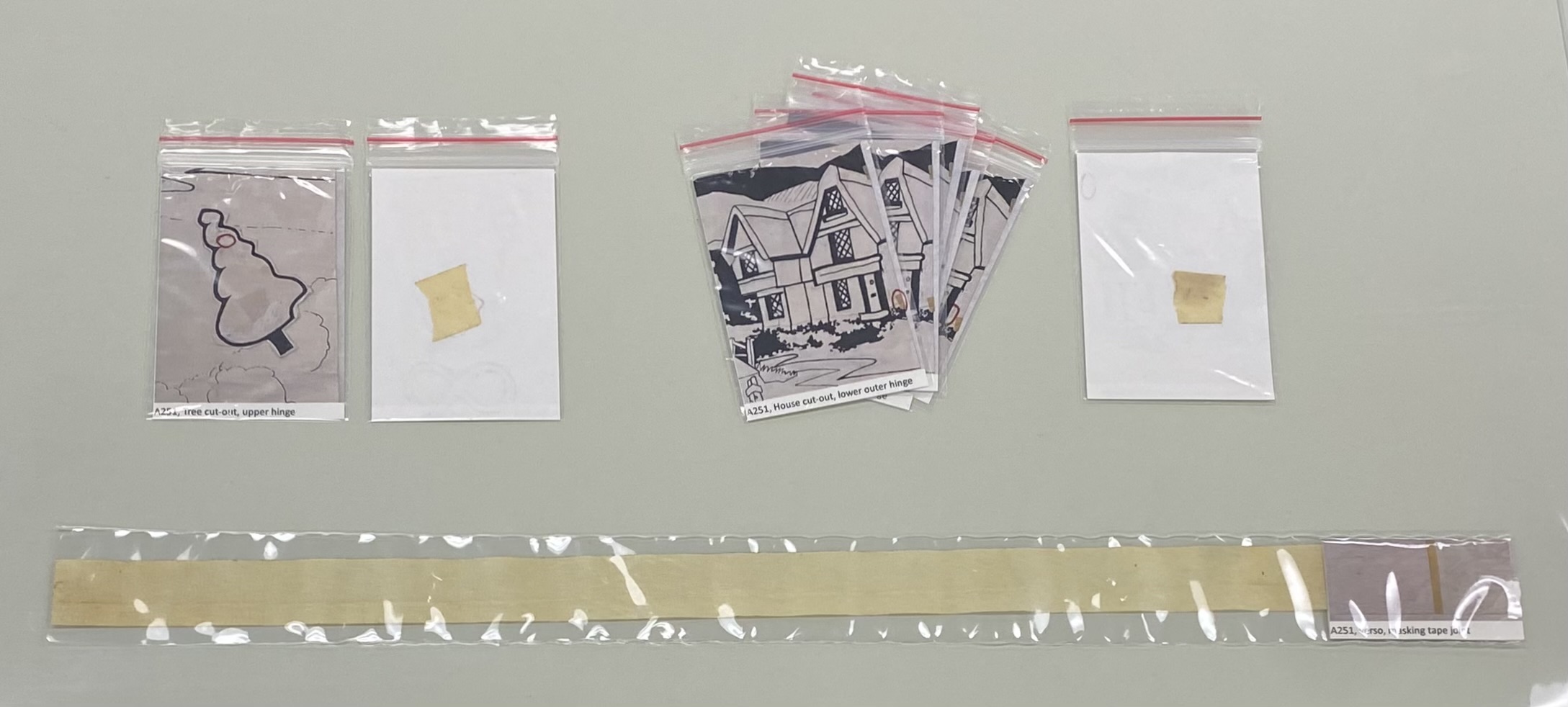
Repair
As the ‘Casual Works’ collection reflects a body of work that is archival in nature, intervention was minimal to preserve evidence of use. For example, no surface cleaning was completed that might remove such evidence as fingerprints (or even footprints).
Where elements had come loose, we considered the ethics involved in the repatriation of parts. For example, in the work [Man with glasses] (MS 1417/1/1778) it was clear from original photo documentation and localised staining how the two parts were connected, so these were reattached. However, with no documentation of the original placement of loose elements on the corresponding collage (MS 14217/1/1784), it was determined that these should remain unattached for now.
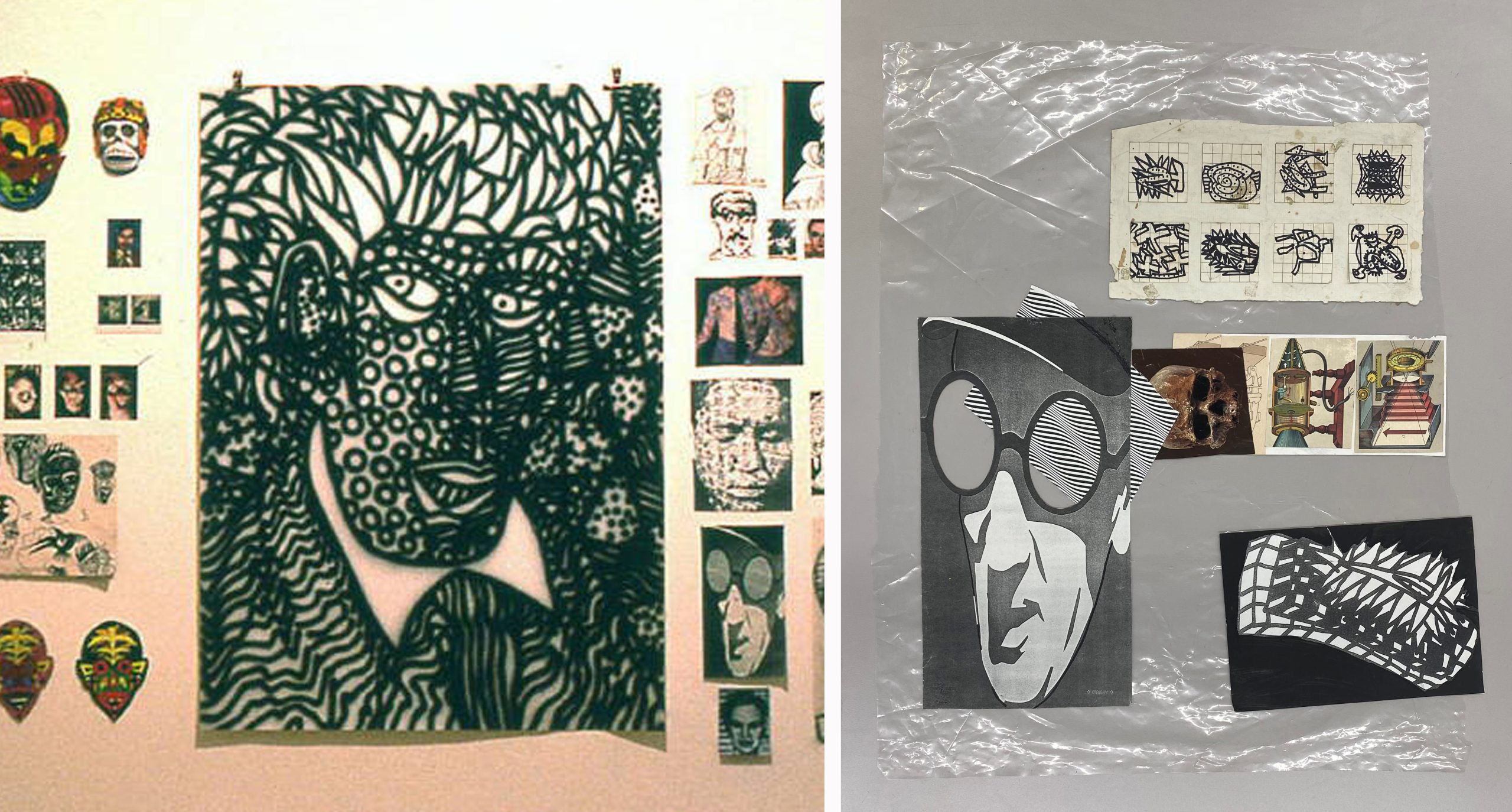
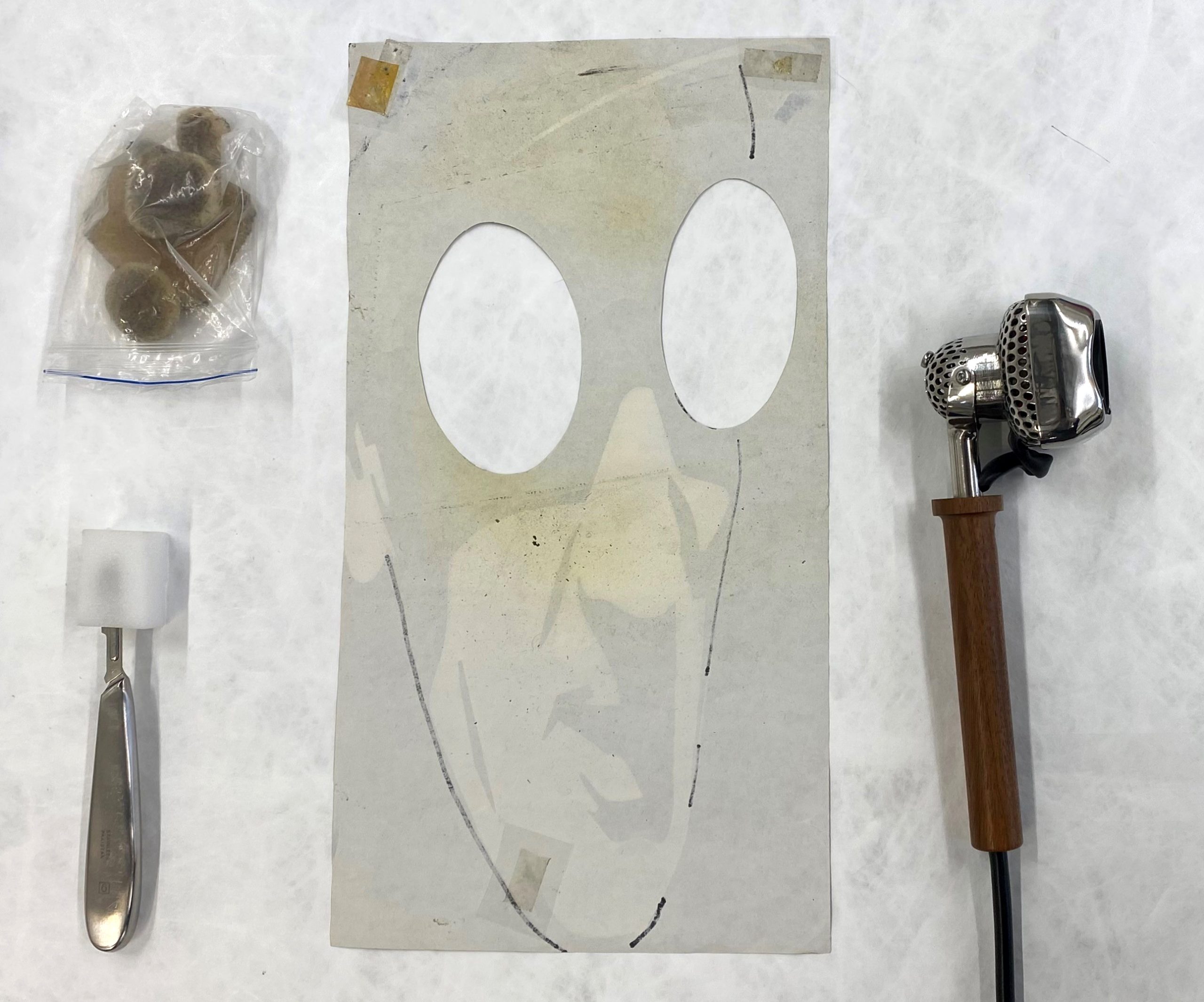
Rehousing
Following treatment, individual items were rehoused in archival sleeves with support boards, then placed in a custom box designed to limit movement, ensuring the continued protection of Arkley’s ‘Casual Works’.
All in all, assessment, documentation, treatment, and rehousing took approximately 30 hours. It was a privilege to work with such an important collection and we are excited to enable public access to these fascinating works, which tell us so much about Howard Arkley’s unique practice.
For more information, check out the full scope notes in the Howard Arkley Archive Finding Aid or click-through to the blog.
Unless otherwise noted, all images feature material from the Howard Arkley Archive, State Library Victoria (MS 14217). Copyright: The Estate of Howard Arkley, courtesy Kalli Rolfe Contemporary Art.
References
Brown, R, [1988?], Howard Arkley: casual works: working drawings, source material, doodles 1974-1987, Gertrude Street Artists Spaces, Fitzroy [Vic.] (AP 709.94 AR4H)
Gregory, J, 2006, Carnival in suburbia: the art of Howard Arkley, Cambridge University Press, Port Melbourne (AOF ; 759.994 AR4G)
Gregory, J, 2010-, Arkley Works, The Estate of Howard Arkley, viewed 1 May 2023, <www.arkleyworks.com>

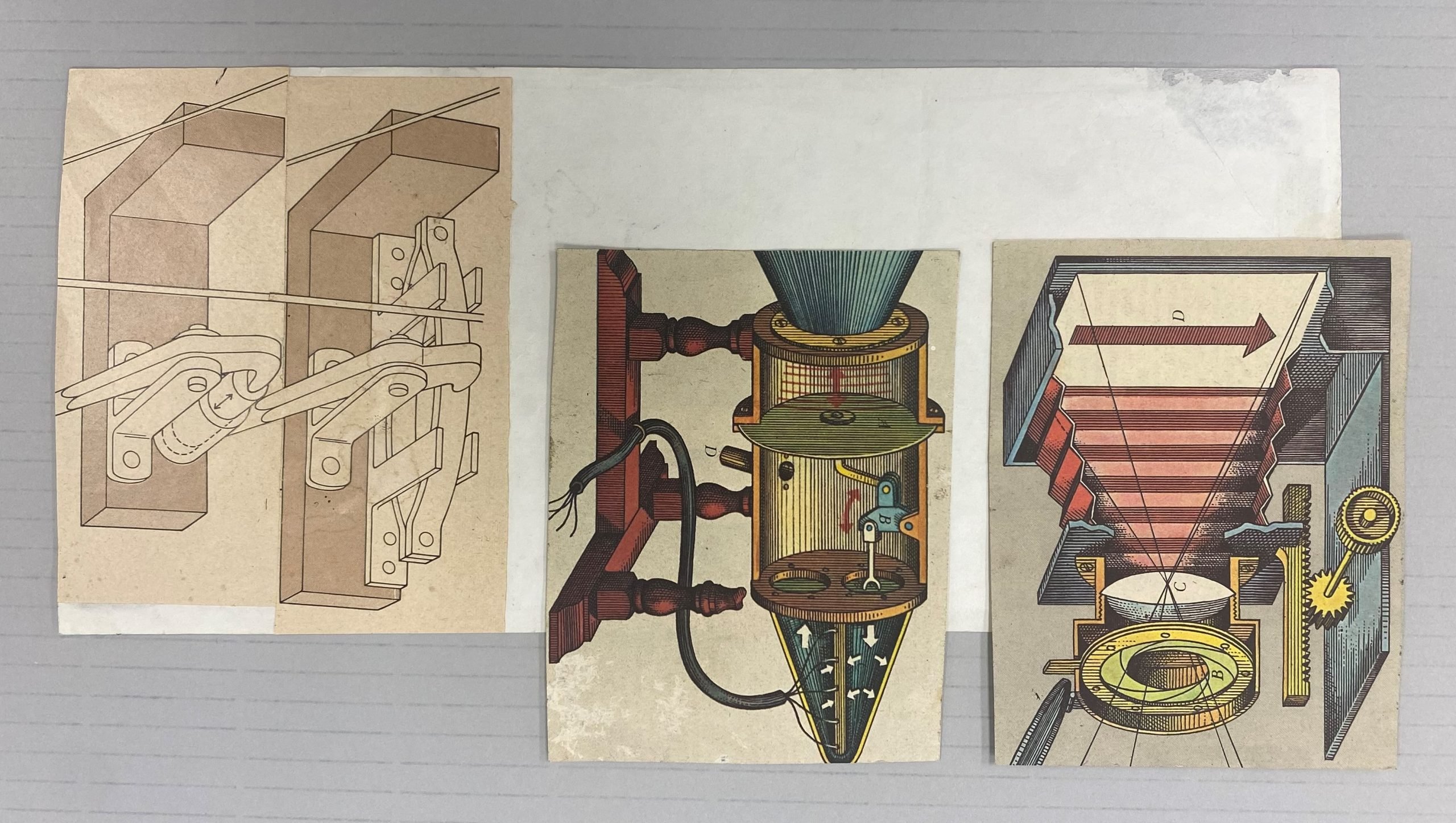
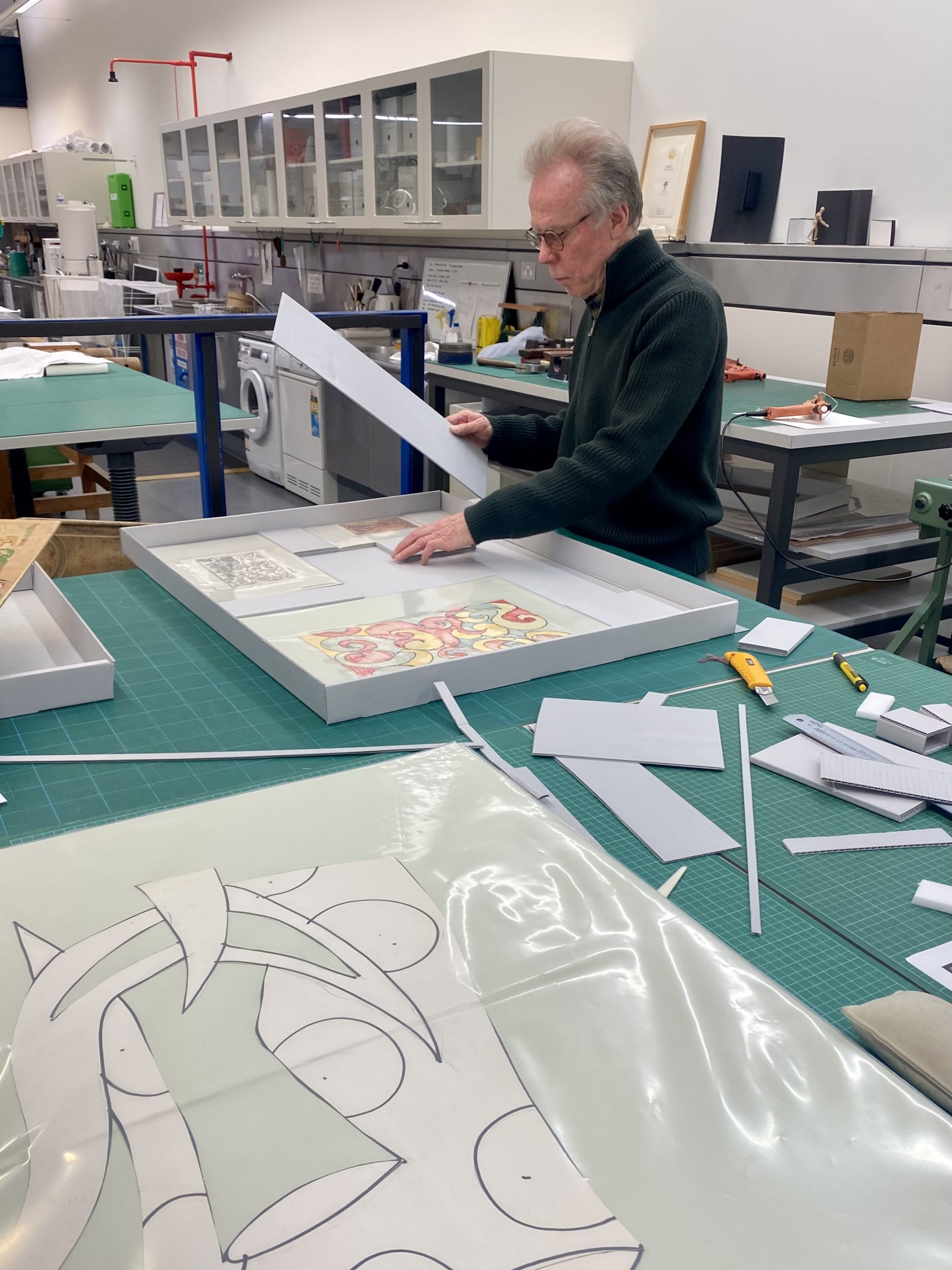

Thank you for explaining your approach to conserving this unique collection material! And for illuminating the various and complicated ethical issues involved in its treatment. The SLV is so fortunate to have a robust conservation department!
Thank you for your kind words, Jean!
Are the Howard Arkley works available for public viewing? Would love to be able to bring my mother in law in to view the collection – she is Howard’s second cousin & they spent a lot of their childhood together. Thanks
Hi Dianne. Thank you for reaching out. The Arkley Archive is very large, so we ask that, in the first instance, you look at the detailed Finding Aid: https://findingaids.slv.vic.gov.au/repositories/3/resources/152. Once you have narrowed down what you would like to see, you can then contact Ask a Librarian about possible access. You may also be interested to know that there are over 200 images from the Archive digitised online, and some very interesting material currently on exhibition in the Library’s North Rotunda.
More Brilliant work from our expert conservators!